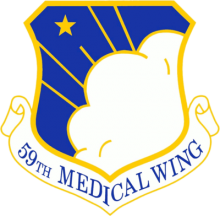Evaluation of Prolonged Field Care Resuscitation Guided by Blood Pressure Versus Cerebral Perfusion in a Swine Model of Hemorrhage and Traumatic Brain Injury
The proposed studies include an evaluation of advanced methods of monitoring casualties and guiding resuscitation in combination with an evaluation of the use of plasma/blood products to improve survival and neurologic outcomes in the context of prolonged field care of combat casualties with a poly-trauma and brain injury, aligning with the following solicited focus areas: Area 1) Understand the clinical implications of prolonged field care (PFC) and prolonged damage control resuscitation (pDCR)Area 2) Develop next-generation resuscitation and stabilization methods for PFC and pDCR.Area 3) Develop enhanced treatment of injuries during PFC and pDCRProlonged field care (PFC) is medical care that occurs over an extended period of time (hours to days), with few tools, and in an austere environment. A key component of PFC is early (<24h) damage control resuscitation (DCR) as an approach to sustain adequate oxygenation and coagulation until definitive surgical intervention. However, proposed PFC will need to address unique problems of pre-hospital care provided forward in a prolonged manner and result in extended hold times (EHT). Currently no model exists to determine the physiological impact of this scenario. Hypotensive resuscitation is preferred, but optimal resuscitation regimes for this unique medical care scenario are unknown.Technical Approach/Research Methods:Aim 1: Characterize the pathophysiology associated with 48h PFC/EHT of hemorrhagic trauma. This will be achieved by developing a military-relevant polytrauma model in swine that incorporates hemorrhagic shock, blunt chest trauma, closed femur fracture, liver laceration, and hypotensive resuscitation up to 48h.Aim 2: Evaluate TCCC preferred resuscitation fluid in PFC/EHT environment. This aim will be accomplished by employing fresh whole blood transfusion.59MDW/ST FY17 Call for ProposalsAim 3: Evaluate a novel immunotherapy for the ability to lessen PFC/EHT pathophysiology. This will be achieved by evaluating commercially available specialized pro-resolving mediators (SPMs) as adjunctive therapy to hypotensive resuscitation with FWB.Objective/Hypothesis: Hypotensive resuscitation triggers ischemia reperfusion injury in microvasculature. We hypothesize that 1) PFC/EHT (up to 48h) of hemorrhagic trauma treated with hypotensive resuscitation will be associated with increased tissue damage plus immunological and organ dysfunction. Both FWB and SPMs have been shown to reduce multiple pathologies triggered by traumatic injury. We hypothesize that 2) use of FWB resuscitation or FWB+SPM therapy will reduce the pathophysiological changes associated with PFC and prime the immune system for secondary insult.Transition Strategy The knowledge gained and the dissemination of this work will lead to improved patient care in situations of delayed definitive care by providing guidance for potential therapies. The specialized pro-resolving mediators utilized in this study may be the subject of clinical trials designed to improve outcomes following trauma and eventually be incorporated into clinical practice guidelines of the DoD. Knowledge of the benefits of fresh whole blood and hypotensive resuscitation during long holding times will also be expanded.The knowledge products generated from this novel multi-trauma model will also serve as a basis for animal models of injury that more accurately mimic real life injuries in the theater of operations. A more relevant animal model will lead to better therapies and a better assessment of current therapies and modalities. Novel biomarkers of trauma related injuries that manifest on longer time scales will also be identified.

